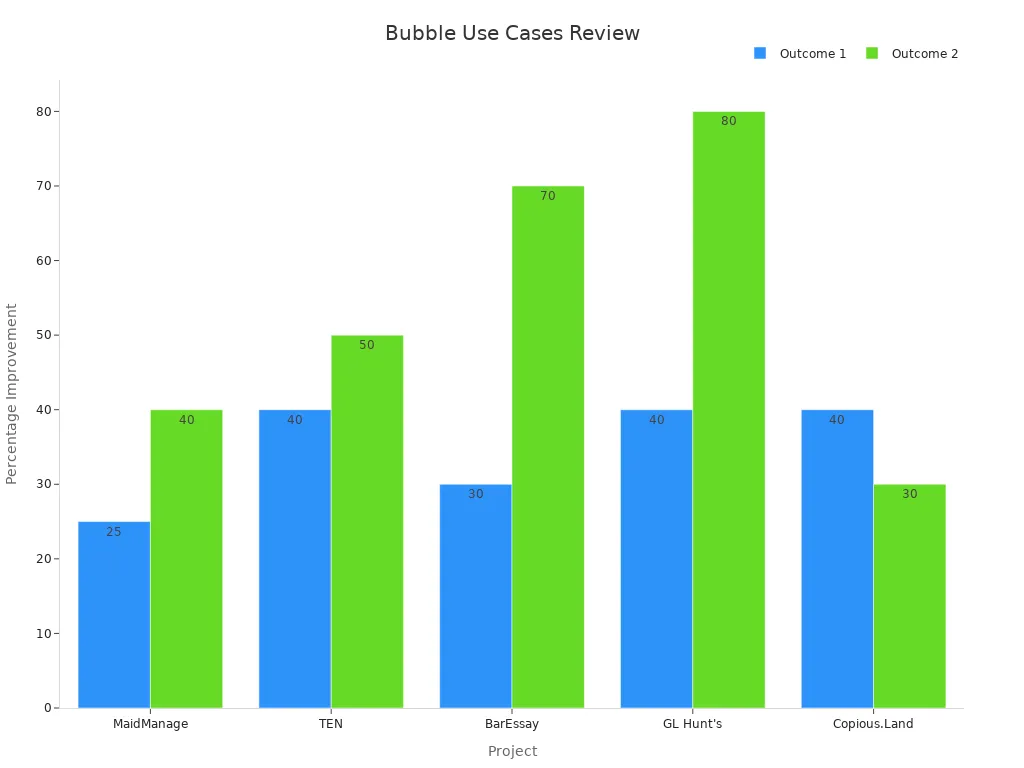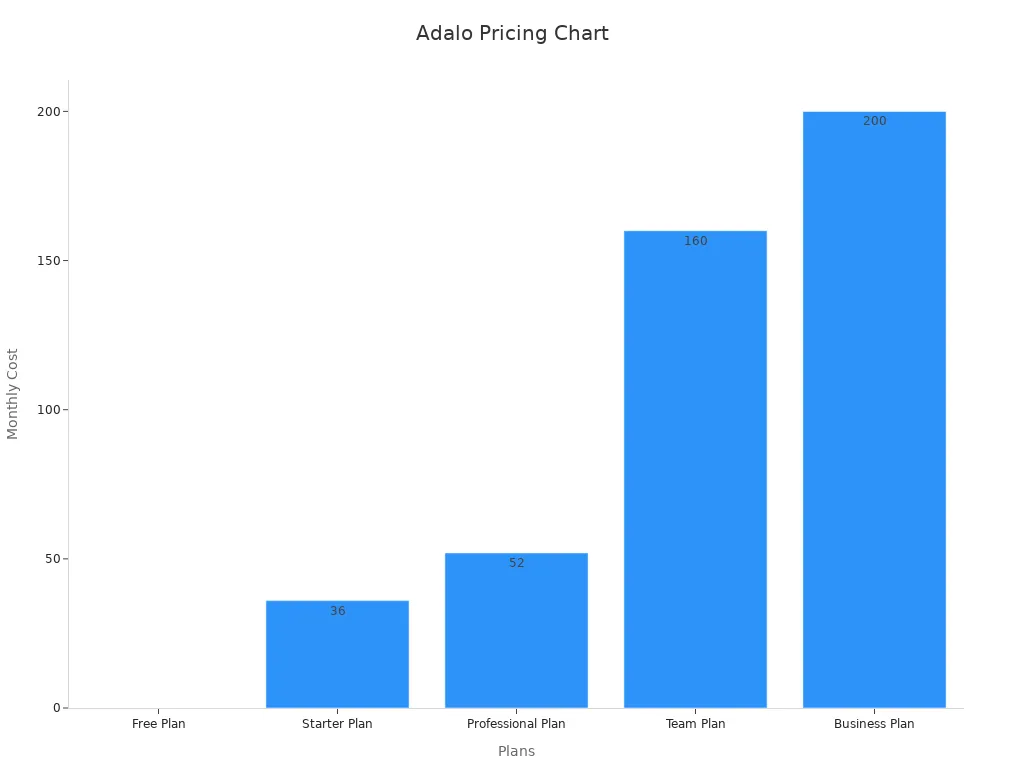8 No Code Platforms to Boost Your Freelance Career

Freelancers always strive to work faster and better. No-code tools can make tasks easier, save time, and lower costs. For example:
73% of IT leaders save 10-50% of time using automation.
Companies cut app-making time by up to 90% with low-code tools.
These tools empower no code freelancers to create apps and websites without coding skills. By utilizing no-code tools, you can develop substantial applications, work smarter, and elevate your freelance career.
1. Momen
Features
Momen is a flexible no-code tool for building apps. You can create custom web apps without writing any code. It works in your browser, making it easy to use. You can design, build, and launch apps quickly with its fast tools. Momen connects with services like Airtable and Zapier to add features. It also has real-time logs and a debugger to check app performance. Security is a priority, with strong access controls and data protection.
Use Cases
Momen is great for freelancers building apps for clients or themselves. You can make prototypes, handle big data, or scalable apps with million users. Teams of up to ten people can work together on one project. This makes it useful for group tasks. Whether you need an online store, data tool, or dashboard, Momen fits your needs.
Pricing
Momen uses project-based pricing, so costs are clear. There are no surprise fees for database use or API calls. You can start free. This makes Momen affordable for freelancers who want a budget-friendly tool.
Limitations
Momen is powerful but not perfect for every job. Apps needing advanced coding may not work well with it. Still, for most freelancers, Momen is a great no-code app builder.
2. Lovable
Features
Lovable makes building apps simple, like having your own tech expert. Its AI tools help you create working apps fast without needing coding skills. You can easily bring in designs from Figma and see updates instantly. This helps you make sure your app looks just how you want. Lovable also lets you own all the app's code, so you can change or grow it anytime.
Here’s why Lovable is special:
Feature | What It Does | Benefits |
|---|---|---|
Easy-to-Use Interface | Chat-based design makes app building simple. | Great for beginners and experts alike. |
Instant Previews | See changes to your app as you make them. | Saves time and builds confidence in your work. |
Full Code Ownership | You keep full control of your app’s code. | Lets you customize and expand your app freely. |
Tool Integration | Connects easily with tools like Supabase. | Helps manage content and interact with users. |
Fast App Creation | Builds basic app structures in minutes. | Cuts down on development time compared to old methods. |
Use Cases
Lovable is perfect for freelancers making apps for clients or personal use. You can create online stores, dashboards, or fun tools like recipe apps. Its speed and simplicity make it great for solo workers or small teams. Real-time editing and fixing bugs mean you can deliver high-quality apps quickly.
Pricing
Lovable has clear pricing, so you always know the cost. While exact prices aren’t listed here, it’s as straightforward as booking a flight online. This helps you plan your spending and stay on budget.
Limitations
Lovable works best for smaller or medium projects. Bigger apps might need extra changes or scaling. But since you can export the code, you can adjust your app as it grows.
3. Bubble

Features
Bubble is a flexible no-code tool with many uses. You can customize apps to fit your needs easily. It works for small projects or big apps with many users. Bubble connects with other tools like Stripe and Zapier to add features. Its AI tools make building apps simpler and faster. A library of templates and plugins helps you save time.
Here’s why Bubble is special:
Feature | Benefit |
|---|---|
Make apps that fit different needs. | |
Scalability | Works for small or large projects. |
Third-party Integrations | Links with tools like Stripe and Zapier. |
AI-powered Features | Makes workflows easier and apps smarter. |
Template and Plugin Library | Use ready-made tools to build faster. |
Use Cases
Bubble is great for freelancers making apps for clients. You can create booking systems, online stores, or smart tools. For example, MaidManage, a cleaning app, cut paperwork by 25% and sped up payments by 40%. Copious.Land, a land marketplace, boosted deals by 40%. These examples show how Bubble helps in different industries.

Pricing
Bubble has plans for all budgets. The free plan is good for beginners. The personal plan costs $25/month and lets you use a custom domain. The professional plan is $115/month and adds teamwork tools. The production plan, at $475/month, is for big apps and includes top support.
Plan Type | Price | Features |
|---|---|---|
Free Plan | $0 | Great for trying out the platform. |
Personal Plan | $25/month | Adds more features and custom domains. |
Professional Plan | $115/month | Includes better tools for teams. |
Production Plan | $475/month | Best for large apps with extra support. |
Limitations
Bubble is powerful but has some downsides. Costs go up as apps get more complex, which can be hard for small budgets. It also takes time to learn, but the community offers lots of help.
4. FlutterFlow
Features
FlutterFlow is a no-code tool that makes app building easy. You can create apps for iOS, Android, and the web. It uses one codebase, saving time and effort. You can quickly test ideas with its rapid prototyping feature. It also grows with your app, handling more users without slowing down. Teams can work together on projects using its collaboration tools.
Key features include:
Quickly test ideas with rapid prototyping.
Build apps for iOS, Android, and web platforms.
Handle more users with scalable features.
Work with teams using collaboration tools.
Use Cases
FlutterFlow is great for freelancers making apps for clients or themselves. You can design online stores, booking apps, or dashboards. Its cross-platform feature helps businesses reach more users. For example, you can make a fitness app that works on phones and computers. Team tools also make it good for group projects.
Pricing
FlutterFlow has plans for different budgets. Beginners can use the free plan. The Basic Plan costs $30/month and includes key features. The Pro Plan is $70/month and adds advanced tools. Teams can use the Team Plan for $200/month. Custom pricing is available for big companies.
Platform | Free Plan | Basic Plan | Pro Plan | Team Plan | Enterprise Plan |
|---|---|---|---|---|---|
FlutterFlow | Yes | $30/month | $70/month | $200/month | Custom |
Bubble | Yes | N/A | $119/month | N/A | N/A |
Adalo | Yes | N/A | $50/month | $200/month | N/A |
Glide | Yes | N/A | $49/month | N/A | N/A |
Limitations
FlutterFlow is strong but not for every project. It may not work well for apps needing complex coding. It focuses on no-code tools, which might limit expert developers. Still, it’s a great choice for most freelancers who want simple and useful features.
5. Adalo
Features
Adalo is a simple no-code tool for making apps. Its drag-and-drop interface makes designing easy, even for beginners. You can use ready-made templates to save time or change them to match your needs. Adalo also connects with other tools like APIs and databases to add more features.
Here are some key features of Adalo:
Drag-and-Drop Interface: Lets you design apps without coding.
Pre-Designed Templates: Speeds up app creation with ready-to-use designs.
Real-Time Data Integration: Updates apps with live data from tools like Airtable.
Barcode Scanning: Helps manage inventory by scanning product codes.
Security Measures: Keeps user data safe with encryption and secure hosting.
These features make Adalo a great choice for freelancers who want to build apps quickly and easily.
Use Cases
Adalo works well for freelancers creating apps for clients or personal use. You can make online stores, booking apps, or tools to track inventory. For example, the barcode scanning feature is useful for managing products in real-time. Adalo also lets you publish apps on custom domains or app stores, helping you show your work and attract clients.
Pricing
Adalo has plans for different budgets. The free plan is good for beginners, while paid plans unlock advanced tools like custom domains and app publishing. Here’s a summary of Adalo’s pricing:
Plan Name | Monthly Cost (Annual Billing) | Features |
|---|---|---|
Free Plan | 200 Records Per App, Unlimited App Actions, 1 App Editor, Unlimited Screens, Unlimited Test Apps | |
Starter Plan | $45 ($36) | 1 Published App, Custom Fonts, Custom Domain, Publish to Web, Publish to App Stores |
Professional Plan | $65 ($52) | 2 Published Apps, Custom Integrations, Design Versions, Geolocation |
Team Plan | $200 ($160) | 5 Published Apps, Priority Support, Xano Integration, Collections API |
Business Plan | $250 ($200) | 10 Published Apps, Unlimited App Editors, Special Add-On Pricing |

Limitations
Adalo is best for simple or medium-level apps. Its visual editor is easy to use but may not handle very complex coding needs. Some users also say customer support could be better. Still, Adalo is a solid no-code platform for most freelancers.
6. Webflow

Features
Webflow is a no-code tool with great design options. It lets you control HTML, CSS, and JavaScript for pro-level websites. Built-in tools like Analyze and Optimize improve site speed and user experience. Freelancers can work with teams using role management for easy collaboration.
Feature | Competitors (WordPress, Wix, Squarespace) | |
|---|---|---|
Loading Speeds | Slower due to extra plugins | |
Built-in Optimization Tools | Yes | Limited, needs third-party plugins |
Design Flexibility | High | Often limited by templates |
Performance for Scaling | Excellent | Slows down with added features |
Use Cases
Webflow is great for freelancers making custom websites. You can create landing pages, online stores, or portfolios. Tools like Analyze track site performance, while Optimize uses AI to boost results. These features help freelancers deliver top-quality websites for clients.
Evidence Point | Description |
|---|---|
Product Evolution | Webflow gives full control of HTML, CSS, and JavaScript for better designs. |
Collaboration Support | Role management makes teamwork easy for freelancers. |
Performance Tools | Analyze tracks data, and Optimize improves conversions with AI. |
Market Fit | Many teams feel limited by other tools, making Webflow a strong choice. |
Pricing
Webflow has plans for different needs. The Free Plan is good for trying it out. Site Plans grow with your website size. Workspaces are made for freelancers and agencies. Paid plans include:
Plan Name | Price/month | Features Included |
|---|---|---|
Gold | Unlimited projects, client billing, code export | |
Platinum | $199 | Advanced tools, team features, white labeling |
Diamond | $299 | Priority support, account manager, custom domains |
Limitations
Webflow is powerful but not for everyone. Beginners may find it hard to use. Its cost is higher than simpler tools like Wix. Still, for freelancers wanting professional websites, Webflow is a top pick.
7. Zapier
Features
Zapier is a flexible tool for automating tasks. It connects over 5,000 apps to simplify workflows. You can create "Zaps" to handle repetitive jobs automatically. Its easy-to-use design works well for beginners. Zapier supports multi-step tasks and advanced features like conditional logic.
Why Zapier is great:
Trusted for over 10 years, handling billions of tasks monthly.
Helpful community with templates and guides for quick setup.
Advanced tools for users who need more complex automation.
Feature | Zapier Rating | Notes |
|---|---|---|
Average Rating | Users are happy with its automation abilities. | |
Reviews Sentiment | 7.1 | Positive feedback shows it’s effective and reliable. |
Number of Reviews | 41 | Many reviews add trust to its high ratings. |
Ranking in Cloud Data Integration | 10th | Competes well among automation tools in the market. |
Use Cases
Zapier helps freelancers save time and focus on creative work. You can automate tasks like sending invoices or updating spreadsheets. For example, you can set up a Zap to add new email subscribers to your CRM. It’s great for managing client projects or improving your own business processes.
Pricing
Zapier has clear pricing, starting from free to $599/month. The Free plan includes basic tools and AI features, making it beginner-friendly. Higher plans offer advanced options like multi-step workflows and team tools. This pricing model has helped Zapier grow its income per user significantly.
Pricing highlights:
AI tools are included in every plan, even the Free one.
Advanced features are unlocked with higher-tier plans.
Limitations
Zapier works best for simple to medium-level workflows. It’s not ideal for tasks needing deep customization or heavy data processing. Costs can rise quickly if you automate many tasks or involve large teams.
8. Airtable
Features
Airtable is like a mix of spreadsheets and databases. It’s a flexible tool for freelancers. You can organize data, track tasks, and create workflows without coding. It links data for better insights and has tools to make custom dashboards. Airtable also automates tasks, saving time by setting up triggers and actions.
Here’s what makes Airtable special:
Feature | Description |
|---|---|
Combines easy spreadsheets with powerful database features. | |
Pre-made templates | Ready-to-use templates save time and improve efficiency. |
Customizable views | Shows data in grids, calendars, or kanban boards for better organization. |
Collaboration-friendly | Lets multiple users share and edit data in real-time. |
Airtable Sync | Keeps records updated across different bases for consistency. |
Gantt view | Tracks tasks and deadlines on a timeline for projects. |
Use Cases
Airtable is great for freelancers managing tasks or working with clients. You can use it to plan content, track inventory, or organize workflows. It connects with tools like Google Suite, Salesforce, and Twilio to boost productivity. For example, link Airtable with Jira to follow project progress or set reminders for deadlines using automation.
Freelancers also love Airtable’s ability to connect data for a full view of information. Whether you’re building a CRM, creating a portfolio, or managing a team, Airtable adjusts to your needs.
Pricing
Airtable has a free plan with basic tools for small projects. Paid plans start at $20 per user/month and include advanced features like automation and custom views. Costs may rise if you need more rows or extra licenses for view-only users.
Free Plan: Basic tools for small tasks.
Plus Plan: $20/user/month for advanced features.
Pro Plan: $40/user/month for bigger datasets and premium tools.
Enterprise Plan: Custom pricing for large teams or businesses.
Airtable costs more than some other tools, but its features make it worth it for many freelancers.
Limitations
Airtable is very flexible but not perfect for everyone. Beginners might find it hard to learn if they don’t know databases. Also, the cost can add up for large datasets or extra licenses. Even with these issues, Airtable is still a top pick for freelancers needing a strong no-code tool for managing projects.
No-code tools help you control your freelance projects easily. They cut costs by up to 80% and make tasks simpler. These tools let you handle many clients without stress. Begin with one or two no-code tools to try them out. Slowly add more tools to grow your business and improve your portfolio.
FAQ
What is a no-code platform?
A no-code platform lets you create apps, websites, or workflows without coding. You use visual tools like drag-and-drop interfaces to build projects quickly and easily.
How do no-code tools help freelancers?
No-code tools save time and reduce costs. You can deliver projects faster, manage workflows efficiently, and attract more clients by offering innovative solutions without needing coding skills.
Are no-code platforms suitable for beginners?
Yes! Most no-code platforms have user-friendly interfaces. You can start with templates, tutorials, and guides to learn how to build apps or websites step by step.
See Also
Top No-Code Solutions for Freelancers in 2025
8 Ideal No-Code AI Tools for Startup Founders
7 Essential No-Code Resources for Founders Without Tech Skills
